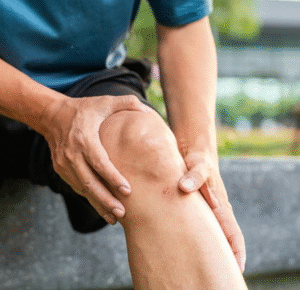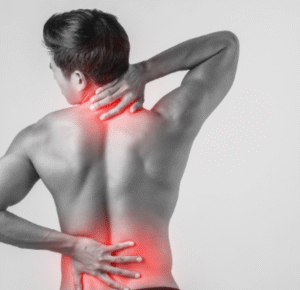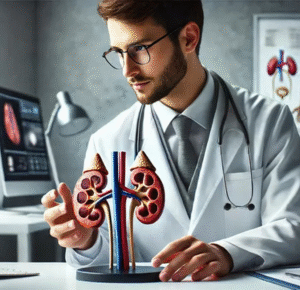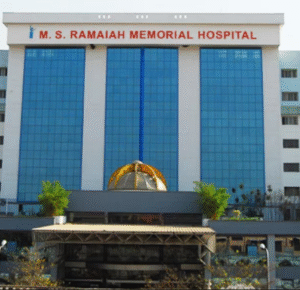As we enter an era defined by rapid technological advancements, the healthcare landscape is undergoing a significant transformation. One of the most impactful changes is the adoption of remote patient monitoring va, particularly within the Veterans Affairs (VA) healthcare system. This innovative approach not only enhances the quality of care provided to veterans but also reshapes the dynamics of patient-provider interactions. In this blog, we will explore how the VA is embracing Remote Patient Monitoring, the benefits it offers, the challenges it faces, and the future directions of this revolutionary technology.
Understanding Remote Patient Monitoring
Remote Patient Monitoring involves the use of technology to collect, transmit, and analyze health data from patients outside of traditional healthcare settings. This includes a range of devices, such as wearables, mobile applications, and telehealth platforms that allow healthcare providers to track patients’ vital signs, medication adherence, and overall health status in real time.
RPM is particularly vital in the VA system, where many veterans live with chronic conditions requiring ongoing management. RPM enables healthcare providers to monitor these conditions proactively, ensuring timely interventions and personalized care.
The VA’s Commitment to Innovation
The Department of Veterans Affairs has long been at the forefront of healthcare innovation, striving to improve the health and well-being of veterans. The introduction of RPM is part of a broader initiative to leverage technology in providing high-quality care.
The VA has recognized the potential of RPM to address the unique healthcare needs of veterans, many of whom experience challenges such as:
- Chronic Conditions: Veterans often face multiple chronic conditions, including diabetes, hypertension, and heart disease, which require regular monitoring.
- Mental Health Issues: Conditions like post-traumatic stress disorder (PTSD) and depression are prevalent among veterans and necessitate ongoing support and management.
- Geographic Barriers: Many veterans reside in rural or underserved areas, making access to healthcare facilities challenging.
By embracing RPM, the VA aims to bridge these gaps and enhance the overall healthcare experience for veterans.
How RPM Works in the VA System
The implementation of RPM within the VA system involves various technologies and processes that facilitate continuous patient monitoring:
Wearable Devices
Wearable devices, such as fitness trackers and smartwatches, play a crucial role in RPM. These devices can monitor vital signs like heart rate, blood pressure, and physical activity levels. Veterans can use these devices to collect health data, which is then transmitted to their healthcare providers for analysis.
Mobile Health Applications
Mobile health applications enable veterans to manage their health by providing tools for tracking symptoms, medications, and appointments. These apps often feature reminders for medication adherence and allow veterans to report any changes in their condition, fostering better communication with their healthcare teams.
Telehealth Platforms
Telehealth has become a vital component of healthcare delivery, especially during the COVID-19 pandemic. RPM seamlessly integrates with telehealth platforms, allowing veterans to have virtual consultations with their healthcare providers. This combination enhances access to care and ensures that veterans receive timely support.
Benefits of RPM for Veterans
The integration of Remote Patient Monitoring into the VA healthcare system offers numerous benefits:
Improved Health Outcomes
By enabling continuous monitoring of health data, RPM facilitates early intervention and proactive management of chronic conditions. Healthcare providers can identify potential issues before they escalate, leading to improved health outcomes for veterans.
For example, if a veteran with hypertension experiences a sudden spike in blood pressure, the healthcare provider can intervene promptly to address the issue. This proactive approach not only reduces the risk of complications but also enhances the overall quality of care.
Enhanced Patient Engagement
RPM empowers veterans to take an active role in their healthcare journey. By providing access to real-time data and support, veterans can make informed decisions about their health and well-being. This increased engagement is particularly important for veterans who may feel isolated or disconnected from their support systems. RPM fosters a sense of agency and control over their health, leading to greater satisfaction with their care.
Increased Accessibility
Access to healthcare is a significant challenge for many veterans, particularly those living in rural or underserved areas. RPM addresses this issue by bringing healthcare directly to veterans, allowing them to receive care from the comfort of their homes.
Through RPM, veterans can use digital devices to transmit health data to their healthcare providers, reducing the need for frequent in-person visits. This increased accessibility ensures that veterans receive timely care, regardless of their geographic location.
Cost Savings
The implementation of RPM can lead to significant cost savings for both veterans and the healthcare system. By reducing the need for hospitalizations and emergency room visits, RPM alleviates the financial burden on veterans and minimizes healthcare expenditures.
For instance, early intervention through RPM can prevent the progression of chronic conditions, reducing the need for costly treatments and hospitalizations. This proactive approach not only benefits veterans but also contributes to the sustainability of the healthcare system.
Challenges in Implementing RPM in the VA
While RPM offers significant benefits, several challenges must be addressed to ensure its successful implementation within the VA system:
Data Privacy and Security
The collection and transmission of health data raise important concerns about privacy and security. Veterans must feel confident that their sensitive information is protected from unauthorized access.
The VA must implement robust security measures to safeguard patient data and comply with regulations such as the Health Insurance Portability and Accountability Act (HIPAA). Ensuring transparency about data handling practices can help build trust between veterans and healthcare providers.
Technological Barriers
Not all veterans have equal access to the technology required for effective RPM. Some may lack the necessary devices or internet connectivity, which can hinder their ability to participate in remote monitoring programs.
The VA should work to bridge this gap by offering resources, training, and support to help veterans navigate technology. Providing access to affordable devices and internet services can also improve participation in RPM initiatives.
Training and Support
For RPM to be effective, healthcare providers must be adequately trained in using the technologies involved. This includes understanding how to interpret the data collected through RPM and integrating it into clinical workflows.
Additionally, veterans may require support in using RPM technologies. Training programs and educational resources can help veterans become comfortable with the tools, ensuring they can fully benefit from remote monitoring.
The Future of RPM in VA Healthcare
The future of Remote Patient Monitoring within the VA healthcare system looks promising, as technological advancements continue to enhance its capabilities. Several key developments are expected to shape the future of RPM for veterans:
Increased Utilization of Telehealth
The COVID-19 pandemic has accelerated the adoption of telehealth services, and this trend is expected to continue in the future. The continued expansion of telehealth will further enhance RPM for veterans, allowing for more flexible and convenient access to care.
Through telehealth platforms, veterans can have virtual consultations with their healthcare providers, discuss their health concerns, and receive guidance on managing their conditions. This combination of RPM and telehealth will create a more comprehensive and patient-centered approach to care.
Improved Interoperability
The future of RPM will also involve improved interoperability between different healthcare systems and technologies. Ensuring that data can be easily shared and accessed across platforms will enhance collaboration between healthcare providers and improve care coordination for veterans.
Interoperability will enable a seamless flow of information, allowing healthcare providers to make informed decisions based on comprehensive patient data. This holistic approach to care will lead to better health outcomes for veterans.
Focus on Personalized Care
As RPM continues to evolve, there will be a growing emphasis on personalized care for veterans. Leveraging data collected through RPM, healthcare providers can tailor interventions to meet the unique needs of each veteran.
Personalized care plans that consider veterans’ specific health conditions, preferences, and goals will lead to more effective treatment outcomes. This patient-centered approach will enhance the overall healthcare experience for veterans.
Conclusion
The integration of Remote Patient Monitoring into the VA healthcare system represents a significant step forward in delivering high-quality care to veterans. By addressing the unique needs of this population, enhancing accessibility, and improving health outcomes, RPM has the potential to transform the healthcare experience for veterans.
As the VA continues to embrace innovative technologies and solutions, the future of RPM looks promising. By overcoming challenges related to data privacy, technological barriers, and training, the DocVA can harness the full potential of RPM to provide veterans with the support and care they deserve.
As we move forward, it is essential to recognize and honor the sacrifices made by veterans by ensuring they receive the best possible healthcare. The future is indeed here, and with the embrace of Remote Patient Monitoring, we can create a healthier and more empowered future for our veterans.






